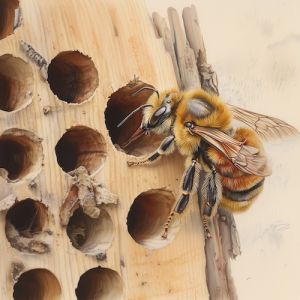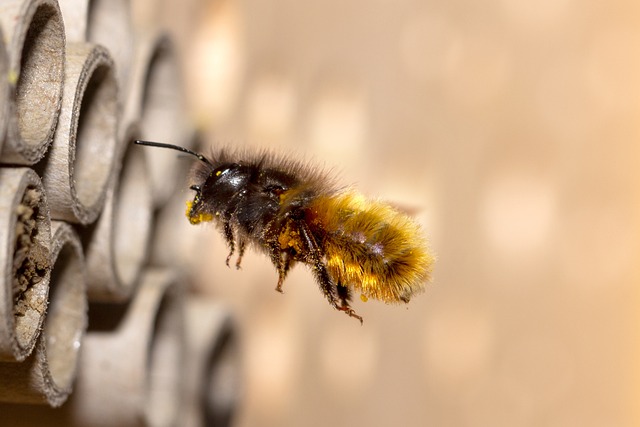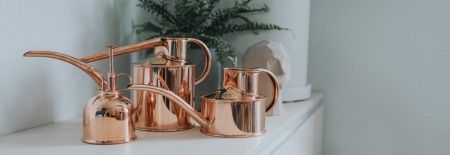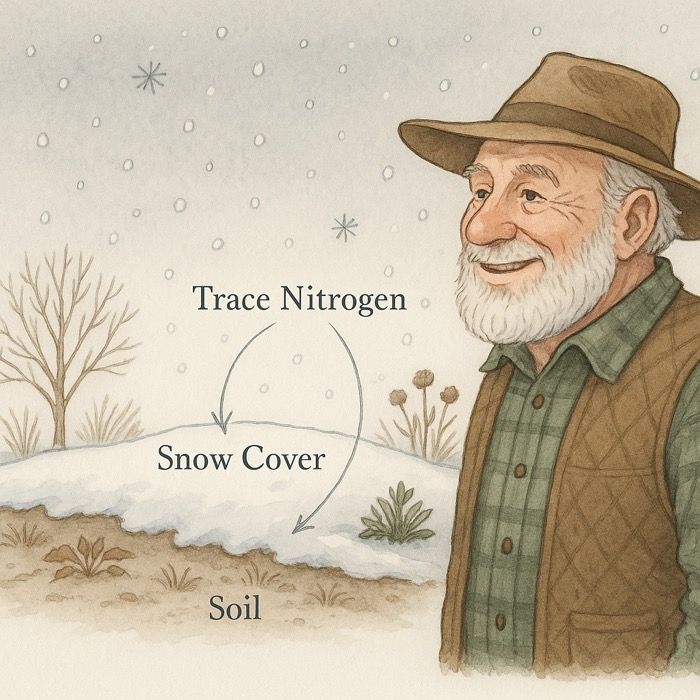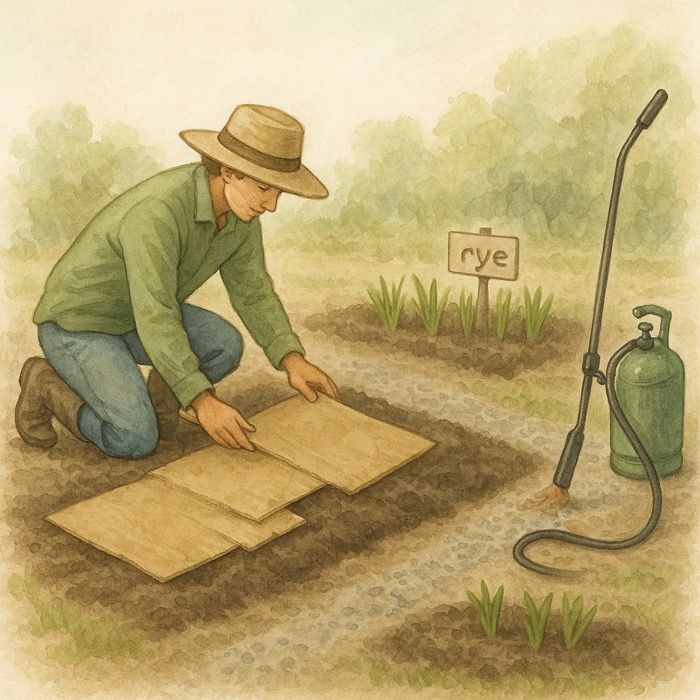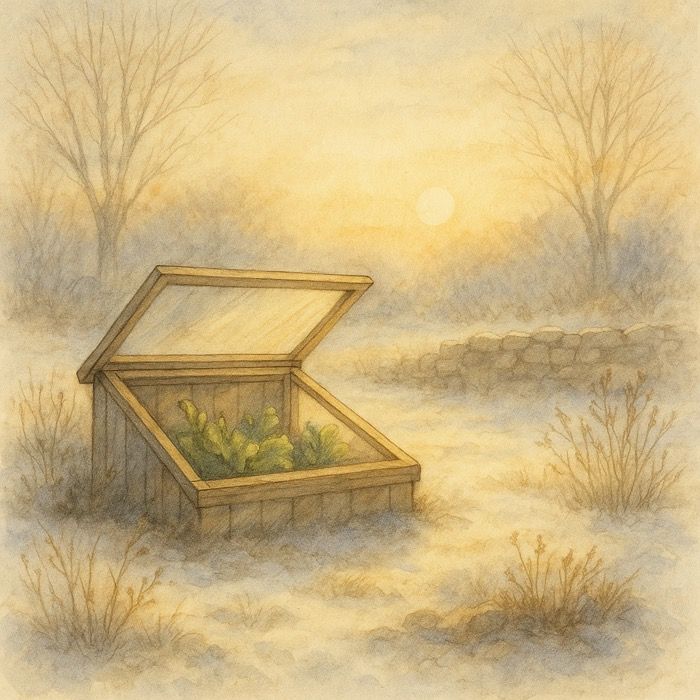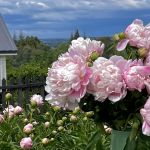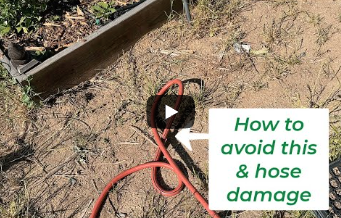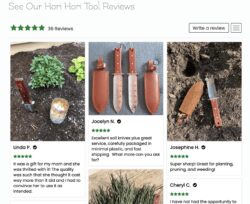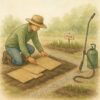Attracting and Keeping Native Beneficial Bees to Your Garden
A flourishing garden relies on more than just healthy soil, water, and sunshine. Pollinators like bees, butterflies, and other beneficial insects play crucial roles in creating a vibrant, productive ecosystem. Without these helpful creatures, fruit trees would struggle to bear fruit, and flowers would have fewer seeds to share. In today’s post, we’ll discuss effective methods to attract and keep these essential insects buzzing happily in your garden, focusing on the introduction of bee hotels and bee houses.
Why Beneficial Bees and Insects Matter
Bees and insects are some of the most effective natural pollinators. While honeybees are often highlighted, many wild and native bees, such as mason bees and bumblebees, are even more efficient at pollinating certain flowers. Additionally, predatory insects like ladybugs and lacewings help manage pests naturally. By inviting these allies into your garden, you support biodiversity and encourage healthier plant growth.
Overview of Solitary Bees and How They Differ from Hive Bees
Most people are familiar with hive bees, like honeybees, which live in colonies and produce honey. However, solitary bees, which make up over 90% of all bee species, live entirely differently. Unlike hive bees, solitary bees do not form large colonies or have a queen. Each female solitary bee is responsible for her own nest, and she gathers pollen and nectar to provide for her offspring without the cooperation of a hive.
Solitary bees include species like mason bees, leafcutter bees, and sweat bees. These bees are generally non-aggressive because they don’t have a hive to defend. Mason bees, for instance, are excellent spring pollinators, while leafcutter bees are active later in the season. Despite their differences from hive bees, solitary bees are incredibly effective at pollination, often visiting more flowers per minute and transferring more pollen.
Concerns About Bee Decline and Extinction
Bee populations worldwide are under significant threat due to habitat loss, pesticide use, and climate change. Some species of bees have already gone extinct, and many others are listed as endangered. The decline in bee populations has severe implications for ecosystems and food production. By creating bee-friendly environments, gardeners can play an active role in supporting these crucial pollinators and preventing further losses. Even small efforts, like planting native wildflowers or providing nesting sites, contribute to the survival of many bee species.
Creating a Bee-Friendly Habitat
To attract and sustain bees and beneficial insects in your garden, consider the following:
- Planting Native Flowers and Herbs
One of the simplest ways to invite pollinators is by planting a diverse array of native flowers. Choose species that bloom at different times throughout the growing season to provide a continuous nectar supply. Wildflowers, lavender, borage, and marigolds are just a few examples. These plants will keep your garden buzzing with activity from spring to fall. - Minimizing Pesticide Use
Chemicals in pesticides can harm or even wipe out your helpful insect populations. Opt for organic or natural pest control methods instead. You can introduce predatory insects, companion plants, or non-toxic treatments such as neem oil to manage harmful pests while keeping your allies safe.
The Science Behind Bee Houses and Hotels
Bee houses or hotels are designed to mimic natural nesting sites for solitary bees like mason bees and leafcutter bees. In the wild, these bees often nest in hollow stems, cracks in wood, or abandoned insect burrows. The science of creating a successful bee hotel involves replicating these conditions to provide a secure, warm environment for bees to lay eggs and raise their young.
- How Bee Hotels Work
A bee hotel consists of a series of tubes or holes that offer safe nesting spaces. Female bees will lay eggs in these cavities, provisioning each cell with pollen and nectar before sealing it off with mud or leaves. The larvae feed on this food supply and develop into adult bees, emerging the following spring to start the cycle anew. - How Long Should the Holes Be?
The holes in a bee hotel should be between 5 to 6 inches deep. This depth provides enough room for solitary bees to create multiple brood cells, which increases their chances of successful reproduction. Holes that are too shallow may leave the larvae vulnerable to predators and temperature fluctuations. Additionally, the holes should be smooth, as rough interiors can injure the bees or make nesting difficult. - Optimizing Your Bee Hotel for Success
The design of your bee hotel matters. The tubes should be smooth and the correct diameter to attract solitary bees—typically between 4 to 10 millimeters. Materials should be untreated and durable to withstand the elements without harming the bees. The position of the bee hotel, facing the morning sun and protected from heavy rain, also ensures that it remains a safe haven for bees.
Introducing a Bee Hotel or Bee House
One way to make your garden truly inviting to pollinators is by adding bee hotels or bee houses. These shelters provide essential nesting habitats for solitary bee species like mason bees and leafcutter bees. Here’s how to get started:
- Choosing the Right Location
Place your bee hotel in a sunny spot that’s protected from strong winds. Make sure it faces south or southeast to catch the morning sun, helping the bees warm up and become active early in the day. A height of around three to six feet off the ground is ideal. - Building or Buying Bee Hotels
You can purchase ready-made bee hotels or make your own using natural materials. Bamboo canes, drilled wooden blocks, or even bundles of hollow reeds make excellent shelters. Be sure to use untreated wood to avoid any harmful chemicals. The holes should be around 4 to 10 millimeters in diameter and 5 to 6 inches deep, providing suitable nesting sites. - Maintaining the Bee Hotel
To keep your bee hotel in good condition, inspect it at the end of the season. Clean out any debris or damaged materials and consider replacing them. Proper care ensures that your bee house will be a safe, thriving environment year after year.
Master Gardener Tips: Enhancing Your Insect-Friendly Space
Master Gardener Steve
Add a Water Source: Place shallow water dishes or birdbaths filled with pebbles for insects to land on while they drink.
Incorporate Leaf Litter and Mulch: Beneficial insects like ground beetles and spiders often nest in these areas.
Create a Wild Corner: Leaving a small section of your garden to grow wild will encourage insect diversity.
Final Thoughts on Keeping a Thriving Garden Ecosystem
Attracting and sustaining beneficial bees and insects is a rewarding practice for any gardener. By planting pollinator-friendly flora, reducing pesticide use, and installing bee hotels, you contribute to a balanced, sustainable environment. This investment in nature’s helpers will pay off through richer blooms, abundant crops, and a garden teeming with life.
More From Our Master Gardener
Recent Posts

❄️ Snow as Fertilizer – The Truth About “Poor Man’s Nitrogen”

5 Unexpected Winter Weed Control Strategies (That Don’t Involve Mulch)

Harnessing Winter Sun – Passive Solar Tricks for Your Garden

How to Grow Spinach – The Ultimate Beginner’s Guide for Tender, Nutritious Leaves

How to Grow Peas: The Ultimate Beginner’s Guide for Sweet, Crisp Harvests
